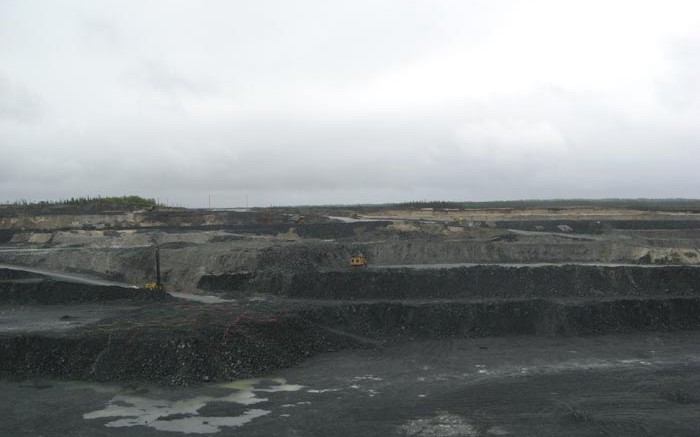VANCOUVER — Miner Detour Gold (TSX: DGC; US-OTC: DRGDF) had a mixed second quarter, as it reported higher-than-anticipated head grades at its wholly owned Detour Lake operation in northeastern Ontario, but ongoing ramp-up struggles prompted the company to lower its 2014 production guidance estimate. Detour indicated that unit mining costs were higher than anticipated due to the shortfall in total tonnes mined and higher equipment-maintenance costs.
Second quarter gold output totalled 117,366 oz. gold, with production driven by higher gold grades, due to improved dilution control. Detour Lake’s mill processed 4.4 million tonnes of ore — with direct feed accounting for 65% of the total, and run-of-mine stockpiles providing the rest — at an average grade of 0.91 gram gold per tonne, with recoveries pegged at 91%. At the end of the quarter, the company reported run-of-mine ore stockpiles of 1.3 million tonnes grading 0.76 gram gold.
Detour’s mill processed an average of 48,600 tonnes per day during the quarter with 83% availability, which is 4% higher than the first quarter, but at the low end of the company’s expectations. Although Detour Lake is making what the company says is “positive progress quarter over quarter,” the ramp-up is slightly behind schedule through the end of June. Detour lowered its mining and mill throughput forecasts, which resulted in a drop in its production guidance by 20,000, to 480,000 oz. gold.
Total cash costs for the second quarter were US$941 per oz. sold — 4% lower than the first quarter, but above guidance — mainly due to fewer tonnes mined resulting in less ore stockpiled, and the higher unit costs during ramp-up. As a result total cash costs for 2014 have been revised upwards by US$100 to between US$900 and US$975 per oz. sold.
“Economies of scale are typically lagging the production ramp up, and we are seeing some of this here. Despite these adjustments we still expect to see a general downward trend in the operating costs over the next quarter, as we start to take advantage of the economy of scale for both the mine and the plant, but again, at a slower rate than we initially anticipated,” president and CEO Paul Martin noted during a second-quarter conference call. “We are still in our ramp-up phase, and that should not be lost on anyone. We have to continue to improve the performance of the mine and the mill to complete the ramp up, and we remain cautiously optimistic about attaining this by year-end.”
Revenues for the second quarter were US$139 million from the sales of 107,206 oz. gold at an average realized price of US$1,293 per oz., though Detour recorded a net loss of US$35 million, or 23¢ per share. The net loss was impacted by US$63.5 million of non-cash items, including depreciation and depletion of US$38 million, while operating cash flow was US$39 million.
Sustaining capital expenditures for the year are expected to range between US$125 million and US$135 million, including no change to deferred stripping of US$35 million. Cash and short-term investments totalled US$138 million at the end of June, which marks a US$7-million drop from the previous quarter.
BMO Capital Markets analyst Brian Quast kept his stock “outperform” rating after Detour’s quarterly results, but lowered his target price by $1 to $17.25 per share. He noted that the company “soundly beat” BMO production estimates of 104,000 oz. gold for the quarter on high head grades, and noted that Detour’s improved dilution control should be viewed positively by investors.
“On the negative side, mining rates, milling rates and plant availability are below company targets and unit-operating costs remain high,” Quast wrote on July 30. “BMO is satisfied with the progress of the ramp-up. However, given continued low mill availability and slower improvement in operating costs, BMO now expects design throughput of 55,000 tonnes per day to be reached in [first-quarter 2015] versus [fourth-quarter 2014], with operating costs reaching targets later in 2015.”
Detour has traded within a 52-week window of $2.88 to $15.62, and closed at $10.05 per share at press time. The company has 158 million shares outstanding for a $1.6-billion market capitalization.


Be the first to comment on "Detour gets a handle on head grades, struggles with mill rates"